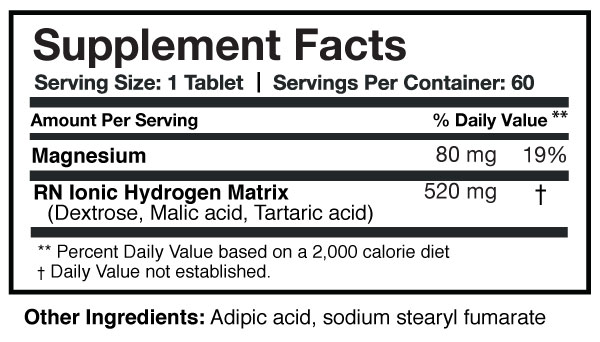Molecular Hydrogen (two atoms of hydrogen combined into one molecule) is a powerful antioxidant that selectively targets the most toxic of free radicals, the hydroxyl group. The ability to selectively target free radicals is important as it means that it will not interfere with adjunctive therapies doctors may be pursuing.
A healthy body creates free radicals as a result of normal activity & metabolism. These free radicals, known as ROS (reactive oxygen species) or RNS (reactive nitrogen species) are kept in check by the healthy body, maintaining normal mitochondrial function. Health challenges, including chemical exposure or physical stress, provide additional obstacles to maintaining this balance.
In contrast to many antioxidants, molecular hydrogen is able to penetrate the blood-brain barrier.
Molecular Hydrogen - Hydrogen molecules in gas form
Selectively targets toxic free radicals such as the hydroxyl free radicals the strongest oxidizing (toxic) radical
Neutralizes hydroxyl free radicals by turning them into water (as a result of giving up an electron)
This selectivity makes this therapy an adjunctive approach to certain immune protocols targeting toxic oxidants
Hydrogen gas is a very stable molecule that cannot be broken apart by good free radicals
Mitochondrial Advantage
Most free radicals are formed in the mitochondria, as it produces energy (ATP)
Hydrogen is the lowest weight (smallest) element and, as a neutral molecule, is easily absorbed into the cell and mitochondria
As a gas, hydrogen can penetrate cellular membranes & enter intracellular compartments
Promotes a healthy level of oxidative stress
The hydrogen molecule is balanced (two electrons & two protons)
This means that it is neutrally charged and will not make the water acidic
It is tasteless, colorless, and odorless
Promotes healthy glutathione levels
Hydrogen gas positively impacts gene transcription, promoting glutathione production
FAQ's
Is it required to use a sealed container such as a water bottle with a lid? No, our formula does not require a sealed container and can be used in any regular cup of water.
If you add hydrogen to water, does it make hydrogen peroxide? No. Water has the chemical formula H2O while hydrogen peroxide has the chemical formula H2O2, which by comparison contains extra oxygen, not hydrogen. So it cannot form hydrogen peroxide. In fact, the hydrogen gas does not bond to or react with the water molecules at all, it simply dissolves into the water.
What holds the two hydrogen atoms together in H2 Absorb? A covalent bond holds the two hydrogen atoms together as one molecule. A covalent bond, also called a molecular bond, is a chemical bond that involves the sharing of electron pairs between atoms. These electron pairs are known as shared pairs or bonding pairs, and the stable balance of attractive and repulsive forces between atoms, when they share electrons, is known as covalent bonding.
Molecular hydrogen gas, or H2 (g), is the primary form in which hydrogen is found. In other words, two hydrogen atoms (H) are covalently bonded together as H-H. Because there are two hydrogen atoms, we call this diatomic hydrogen, di meaning two. Because the hydrogen atoms are covalently bonded together they form a molecule; so H2 is also referred to as molecular hydrogen. We can also refer to it as dihydrogen. The hydrogen molecule contains two protons and two electrons making it a neutrally-charged molecule.
Do the matrix tablets in H2 Absorb produce the same kind of hydrogen water with negatively charged ions that the water ionizers produce? The water is the delivery system for the hydrogen gas. As the hydrogen atoms are covalently bonded (very stable bond), it does not change the taste, appearance, smell, or structure of the water. Hydrogen gas does not bond to or react with the water molecules so it does not alter the water pH.
Is the maltose of a gluten source? No, the maltose does not come from gluten. H2 Absorb is a gluten-free product.



















